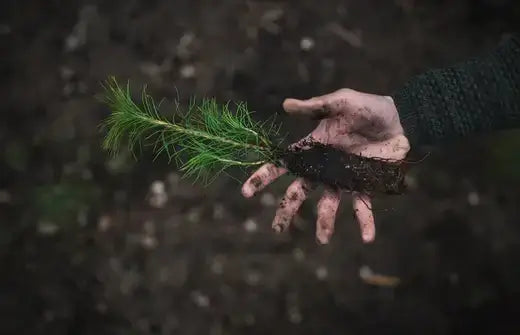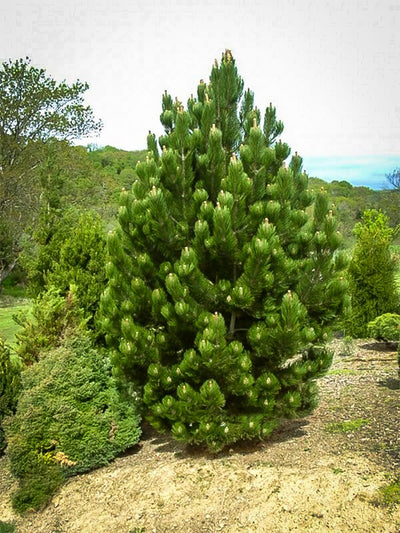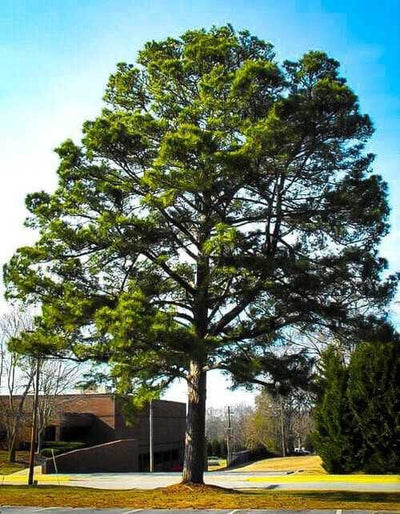Planting Virginia Pine Seedlings: Transparent Approach towards Plant Cultivation
Virginia Pine Seedlings are a valuable asset to the world of cultivation because the tree is quite rare in many areas so the Pinus virginiana is also quite a rarity to find in any part of the common world, especially because it originally hails from the Appalachian Mountains. Despite hardship, the tree is distinct cone-shaped and easily withstands challenges linked to growth in unstable regions. As a wonder of nature, it also serves for the purpose of providing a windbreak and adornment. This article focuses on the procedure of planting and cultivating Virginia Seedlings to encourage the growth of more pine trees.
Why Cultivating Seedlings of Virginia?
Most professionals in the world of land cultivation and farming can attest to the fact that the tree is favorable to plant. In a steady progression, the tree grows in height by an astonishing 18 inches in a year and can easily reach maturity of age five. Once mature, the tree is said to be an admirable sight and in itself turns into a piece of art. The Virginia Pines are quite simplistic and adorable, capable of generating a harmonious aura when planted in clusters or rows.
Ideal Planting Conditions Virginia Pine Planting Conditions
Virginia Pine seedlings like to grow within hardiness zones 4 to 8 and are able to grow in many types of soil such as sand and clay types. Due to lack of soil type boundaries, they are great to be planted in areas that are bare due to lack of soil or in areas where other trees are struggling to grow.
Planting Virginia Pine Seedlings
Site Selection: Pick a spot that receives full sun or partial sun to help the seedlings grow well. Do not put them in areas with full shade or heavy winds.
Spacing: When planting the seedlings, make sure to place them 20 to 25 feet apart. This way, there will be enough room for the trees to grow in a full healthy cone shape.
Planting Process:
-
Make a hole that is wider than the seedling root ball.
-
Carefully take the seedling out of the pot and place it in the hole while making sure the root collar is not covered.
-
Fill the hole with soil and seal it.
-
Water the seedling all the way through for as long as necessary without letting the water sit in the bottom of the container. The seedling should also be staked so that it has maximum protection against uprooting by strong winds or any other force that might exert the same degree of pull.
Watering: During the period of root establishment, rainfall will be insufficient, so the seedling should be watered on a regular basis. When the root system has been established, rain deposits will be adequate.
Virginia pine seedlings require hardly any maintenance after being planted. Though there are, in fact, a few which, if adhered to, will ensure the seedling’s survival for as long as possible.
A pine tree may be affected by a variety of threats, including the beetles, the sawfly, the pine weevil, not to mention Heart rot, Pitch Canker, and Tip Blight disease. Virginia Pines, of course, suffer from much more than that. Inspect the trees frequently, and for any pests, apply the correct kind of pesticide, and for any blights, the appropriate fungicides.
Self-pruning occurs among Virginia pine trees, but regular pruning of any kind will always increase the overall health of the tree. Trimming also minimizes the probability of shape loss and limb injury, and thus increases the chances of formation of a neat, clean silhouette.
Maintaining tree health can be a real challenge, and for that reason many farmers will apply mulch at the bottom of the tree. When applying the mulch, keep in mind that it should be placed a few centimeters away from the trunk of the tree so that it does not come in direct contact.
Landscaping Using Virginia Pine Seedlings
The appealing features and functional value make Virginia Pines easy to use as landscaping trees.
Windbreaks: This type of tree will shield areas from strong winds as its dense foliage and strong supporting structure make it ideal for natural barriers and windbreaks. You can plant them along borders of property lines or close to structures for wind protection.
Natural Barriers: This aesthetically pleasing tree can also serve as a privacy screen to block out unhindered visibility.
Space Consideration: Virginia Pines have shallow roots; therefore they need to be planted 20-25 feet apart which will allow for unhindered free space to grow.
Other Trees That You Can Add to Your Landscape
There are potential other trees to use other than Virginia Pine seedlings that will fit best to your particular conditions. Eastern White Pine, Norway Spruce, and Loblolly Pine are all relatively as easy to grow and as versatile for landscaping use.
Final Thoughts: You Can Start Your Journey of Virginia Pine Seedlings Now.
Planting Virginia Pine seedlings can surely be beneficial as a functional landscape that will give value for a long period of time. If your aim is to add a natural windbreaker, gain privacy, or focus on aesthetics, Virginia Pine trees will suit your needs best.
TN Nursery is where you can find and buy Virginia Pine seedlings along with other exemplary plants. Virginia convenience, our professional staff is committed to assisting you in nurturing a productive garden.
FAQs
How to plant Virginia Pine seedlings?
Select an area that is sunny or partially sunny, dig a hole that's just above the size of the root ball, and for Virginia Pine seedlings, fill the hole with a proper amount of water, allowing the roots to spread. For each individual plant, there should be a distance of 20 to 25 feet and the root collar should be covered by the soil. Seedlings need water and support and should be staked until the roots become established.
What time of year do you plant pine seedlings?
Virginia Pine seedlings are best planted at the beginning of spring and in autumn in order to avoid any extreme weather conditions which may hinder root system growth in the summer or winter.
Can you plant pine seedlings in winter?
Winter planting of seedlings of Virginia Pine is certainly not encouraged. The seedlings may not develop well due to the low growth temperatures. The ideal time to plant the seedlings would be the time when the soil is soft – which is early fall or spring.
How long does it take for a Virginia pine to grow?
Virginia Pine being the evergreen tree is said to grow at the rate of 18 inches each year. These trees grow up to their full height in 5 to 7 years, depending on the conditions of the area. Primarily, these trees produce cones after reaching the age of 3.
What is the 10 20 30 rule for tree planting?
The 10-20-30 rule regarding planting trees is how much distance to keep between each tree. You should plant each tree at least 10 feet from a building, 20 feet from a power line, and 30 feet from the other trees. This helps give trees ample growing space and prevents damage to nearby structures.
How to relocate a Pine Seedling to New Ground?
To relocate a pine seedling, gently scoop up the tree with the root ball and dig around it. When doing so, be sure to retain the root system without damaging it. Move the seedling to a new position that offers ample room for growth, and water it well after transplanting. When doing so, be sure that the root collar remains level with the soil surface.



